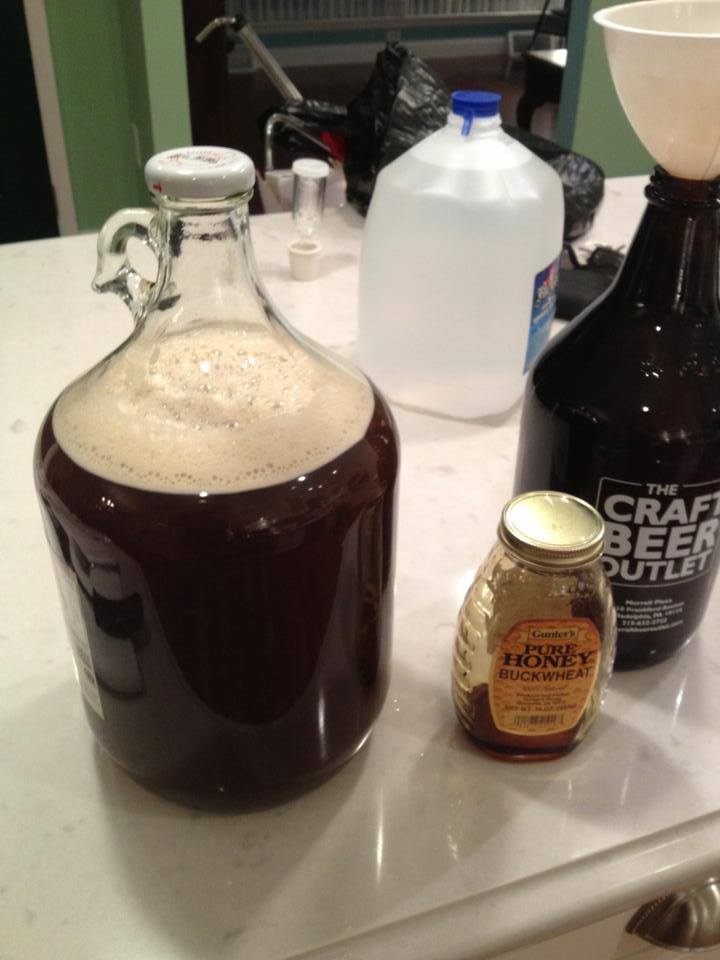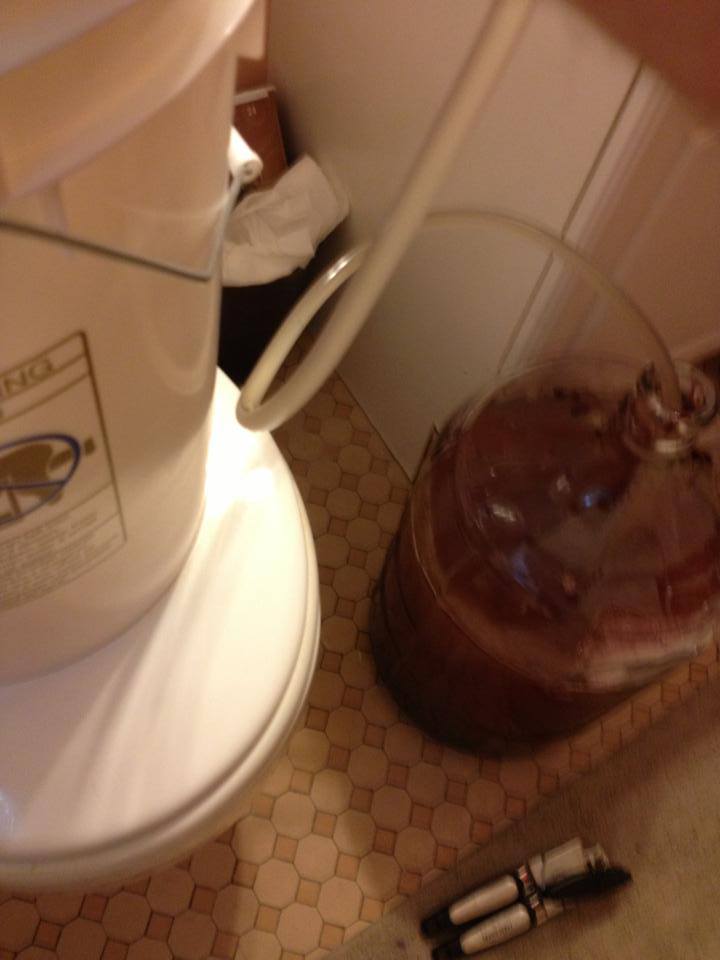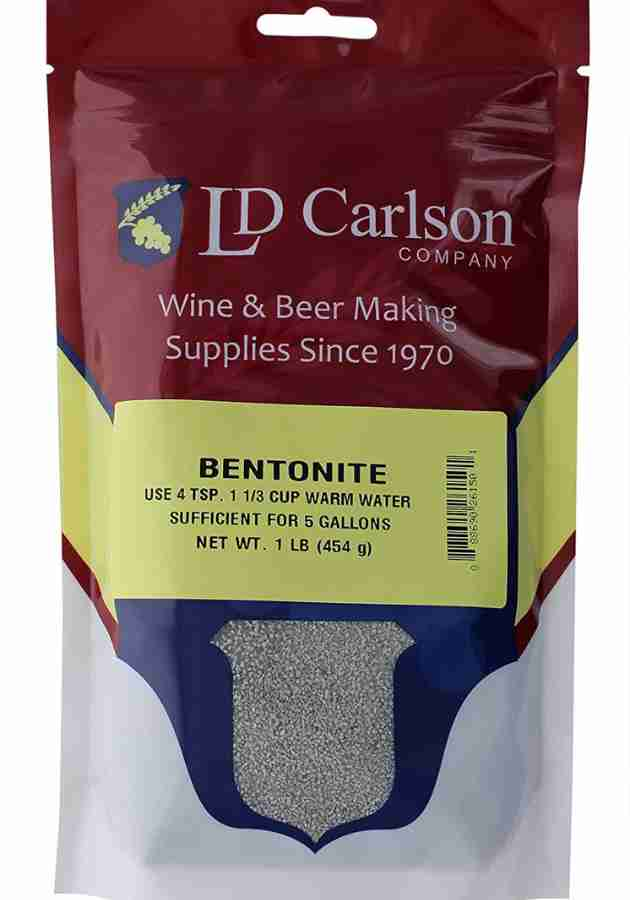When I first got into homebrewing one of the motivations was to create brews exactly like the ones I had in my store. I wanted to see if I could perfectly recreate a store bought brand. In practice, this turns out to be more difficult than I thought. Store bought mead has the perfect look to it, completely clear. A work of art. However, store bought meaderies have the luxury of filtration systems that we homebrewers typically don’t have access to.
Mead is cloudy because it’s filled with tiny particles that are suspended in the solution. These particles are the yeast, various different proteins, and sugars. These particles are most often left over from the fermentation process and can be a pain to remove. Fortunately, there’s a few solutions for the inspired homebrewer to tackle a mead that won’t clear. These methods include time, prevention, racking, using clarifying agents, cold crashing, and filtration.
Different clarifying techniques have their advantages and their disadvantages. Depending on what type of brew you are making or how much time you have will determine how exactly you will want to go about clarifying your mead.
What is Causing Cloudy Mead?
Cloudy mead is caused by the fermentation process. Mead is a liquid filled with various things that are mixed together and then fermented using a yeast strain. These various things like honey and fruit will cause either sugars or proteins to suspend in the liquid. When we introduce yeast into the mix in order to create the alcohol, the yeast floats around and eats the sugars. In the process, some of the yeast multiplies creating more yeast and more cloudiness.
When you first start your mead, it will look relatively clear. Once you drop that yeast in and give it a few days to work its magic, it starts looking like soup. After fermentation stops, the yeast drops and it will begin to clear again. This can take a ton of time to get those last pesky particles out of your finished product.
Clearing Mead with Time
Many times when I was making mead I just couldn’t wait. I wanted to just get them in the bottles and forget about them or drink them. I really didn’t care if it was cloudy or not because it was me drinking them. I wasn’t showing them off or giving them to people. That started to change when I got a mead from an actual meadery attached to my local homebrew supply shop. It was so clear that it looked like a work of art. I thought: I have to up my game.
If allowed to sit, mead will usually clear eventually. What happens is that the yeast that is used to ferment the liquid will either hit its limit of sugars there are to consume or the abv will get so high that the yeast will begin to die off. The yeast then sinks to the bottom of the vessel mostly. Most of them sink but there are some straggler particles that seem to suspend for longer than usual. These will eventually fall due to gravity working on it but the question becomes, how long do you want to wait?
Before you start implementing methods to clear your mead, make sure that your mead is done fermenting fully. Sometimes people can get worked up about cloudy mead not realizing that the yeast is still working. The only way to determine this is with hydrometer readings. Once you know your mead is done fermenting, you can then begin the process of letting the mead clear.
Prevention
One of the best ways to have a clear mead is to prevent your mead from being cloudy in the first place. We do this by having a healthy environment for your yeast. If you are using a recipe that calls for various fruits you should consider using pectic enzyme at the beginning in order to break down the pectin. Pectin is found in the cell walls of plants and acts as a glue to keep plant cells together. When fruit is being fermented it comes out into your mead and can cause haziness.
Creating a healthy environment for your yeast will allow your yeast to ferment faster which will allow it to clear faster. There’s a few methods to keep a healthy environment for your yeast.
- Using yeast nutrient. Honey alone lacks the nutrients to give yeast the food it needs for healthy fermentation. Your recipe should call for the specific amount and what type of nutrients you should be adding and on what schedule (staggered nutrient additions).
- Keep fermentation at the optimal temperature. Different yeast strains like to ferment at different temperatures. Venture outside those temperatures and you could have some problems with your yeast. Check what temperature tolerances your yeast strain has before pitching.
- Degass/oxygenate your mead while fermenting. During the initial fermentation stages your yeast needs oxygen to grow. During this time it’s important to get the excess co2 out of your mead while stirring to allow more oxygen in. This should be done every day.
Racking
The process of taking your mead from one vessel, and transferring it over to another vessel is called racking. The reason that this is done is to get the mead off of the leeds which is the spent yeast that has dropped to the bottom. Oftentimes, just racking your mead into a secondary vessel is enough to clear out some of the particles in your mead.
Some homebrewers will rack their mead multiple times. While this might have the benefit of clearing your mead, there are other disadvantages to this such as greater exposure to oxygen. Once the mead is done fermenting you want to limit its exposure to oxygen as much as possible. Another problem with racking is that you’ll lose volume every time you do it. So not only do you lose some of your mead, but you’ll have to rack into a vessel that is slightly smaller in order to limit oxygen exposure. So you’ll have to weigh whether these potential hazards are worth it to clear out your mead more.
Cold Crashing
Cold crashing is when you take your mead and put it in a cold place like a refrigerator. The cold temperature will make the particles drop out of suspension easier. The yeast goes into a dormant state and falls to the bottom.
Usually cold crashing is done before you rack your mead as it will allow the yeast to compact and harden more at the bottom of your container allowing an easier separation. However, not everyone cold crashes their mead and it’s not mandatory for making a mead.
Cold crashing doesn’t actually kill the yeast, so be aware that if you’re doing cold crashing the yeast will activate again once it comes up to temperature. The danger here lies in cold crashing before fermentation is over. If you do this assuming the yeast its dead it could cause and explosive situation in the bottles.
Using Clarifying Agents
Mead is staying cloudy because of the particles that have resulted from fermentation. These particles have a negative or positive charge. With too much negative or positive it can cause a situation that will leave the particles suspended in the solution. To fix this, clarifying agents are added that have either a negative or positive charge to bond with the particles and help them fall to the bottom.
- Bentonite. Bentonite is a clay that has a strong negative charge. It’s usually dropped into the mead before fermentation.
- Sparkolloid. Sparkolloid is a polysaccharide inside of a diatomaceous earth carrier. It holds a positive charge and works the same way except it’s used after fermentation.
- Isinglass. Isinglass is made from the bladders of certain fish. It’s used after fermentation
- Kitosol-40. Kitosol-40 is a two part clarifier that has kieselsol and chitosan. These apparently work well but I don’t have experience in using them. From what I’ve seen they seem to take a lot of the color of your homebrew out and are also derived from shellfish (which some people are allergic to).
Filtering Homebrewed Mead
Your last option for mead that won’t clear is to filter it. Normally this is beyond the scope of what you would be doing at your house. The reason that breweries use filtration is because they don’t have time to wait for sediment to drop, and they want to make sure there is absolutely zero yeast in the bottles for uniformity and stabilization on the shelf.
If given the right time and using the techniques above your mead will definitely clear. But maybe you don’t have enough time? In this case you would filter your mead by putting it through a wine filter like the Buon Vino Mini Jet Filter. This is a wine filter that uses a pump to send the liquid through a filter. There’s also a gravity filter that you could use but it takes much longer and causes you to lose more of your mead.
Conclusion on Mead That Won’t Clear
Everyone wants their mead to be crystal clear because it shows that you put your heart and soul into your brew and created a work of art. With the various methods above it should be no problem for you to achieve a clear mead. Enjoy!




